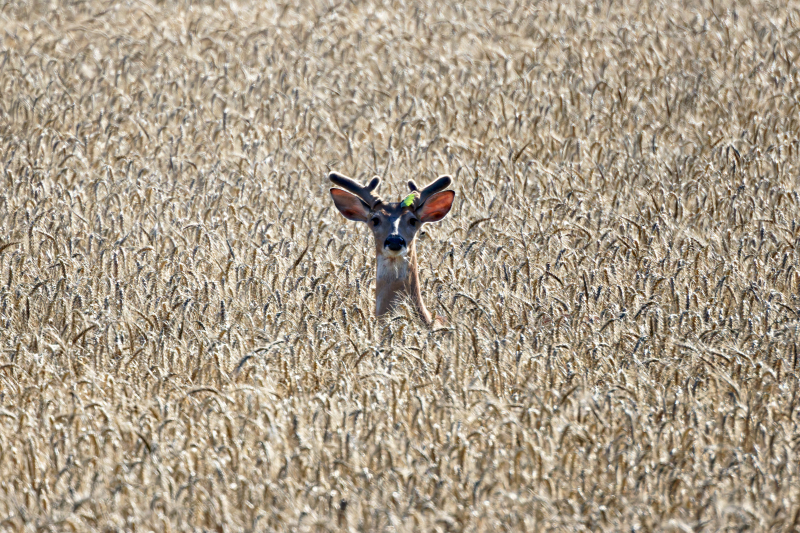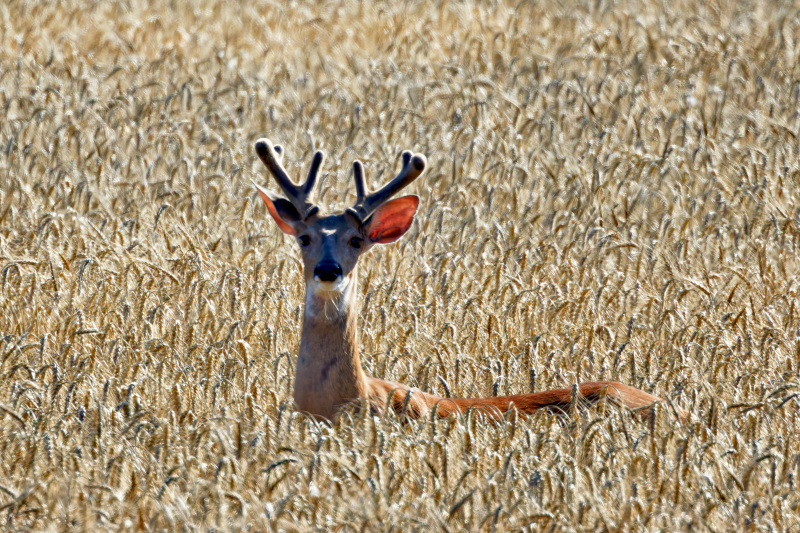Last week, I had the incredible opportunity to capture two remarkable images at the Sequoyah National Wildlife Refuge in Oklahoma. These photos showcase two Whitetail Bucks standing in a field of winter wheat, just before the harvest took place. The timing couldn’t have been more perfect, as these images offer a unique perspective on both the wildlife and the agricultural practices at the refuge.
This year marks the first time I’ve observed winter wheat being grown at Sequoyah. It’s an interesting development that adds a new dimension to the refuge’s landscape. If you’re curious about the significance of winter wheat in Oklahoma and how it fits into the refuge’s ecosystem, I encourage you to check out my previous post: A Golden Surprise at the Sequoyah National Wildlife Refuge. There, you’ll find detailed information about this important crop and its role in our state.
The two photos I’m sharing today are particularly special because they were taken just before the wheat harvest. These images provide a vivid illustration of how tall winter wheat can grow. In fact, the wheat is so tall that it nearly obscures the bucks entirely!

In the first photo, you can only see the buck’s head and his velvet antlers peeking above the golden sea of wheat. It’s a striking image that showcases the impressive height of the crop while also capturing the curious gaze of the deer.
The second photo reveals a bit more of the second buck, but still, only a small portion of his body is visible above the wheat. These images not only document the presence of wildlife in agricultural areas but also demonstrate how effectively deer can use tall crops for cover.

I’m thrilled to have captured these moments before the wheat was harvested. They serve as a unique record of the interplay between wildlife and agriculture at the Sequoyah National Wildlife Refuge. It’s a reminder of the diverse habitats that exist within the refuge and the importance of balancing conservation efforts with sustainable land use practices.
As we move forward, I’ll be keeping an eye out for more unexpected sightings and developments at the refuge. Stay tuned for more updates and insights from this fascinating corner of Oklahoma’s natural world.
Would you like me to modify or expand on any part of this blog post?
